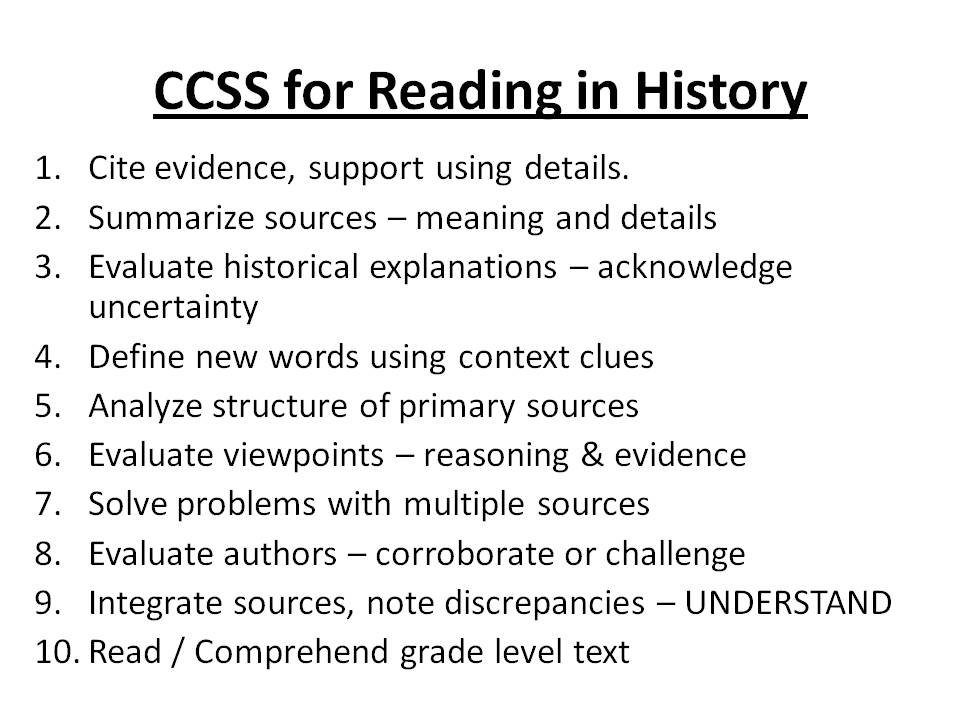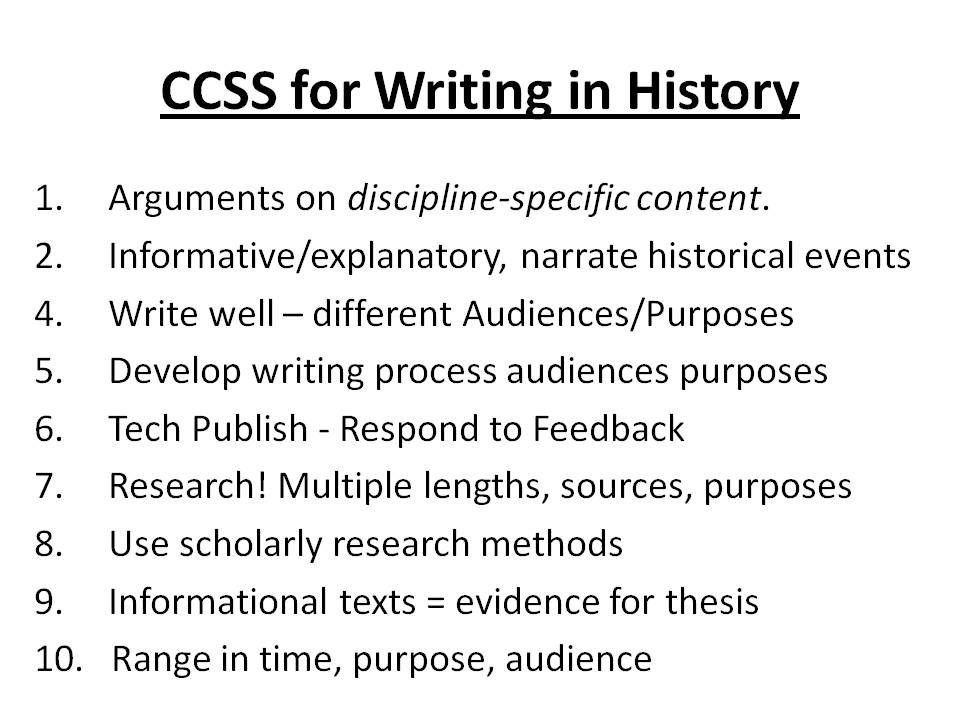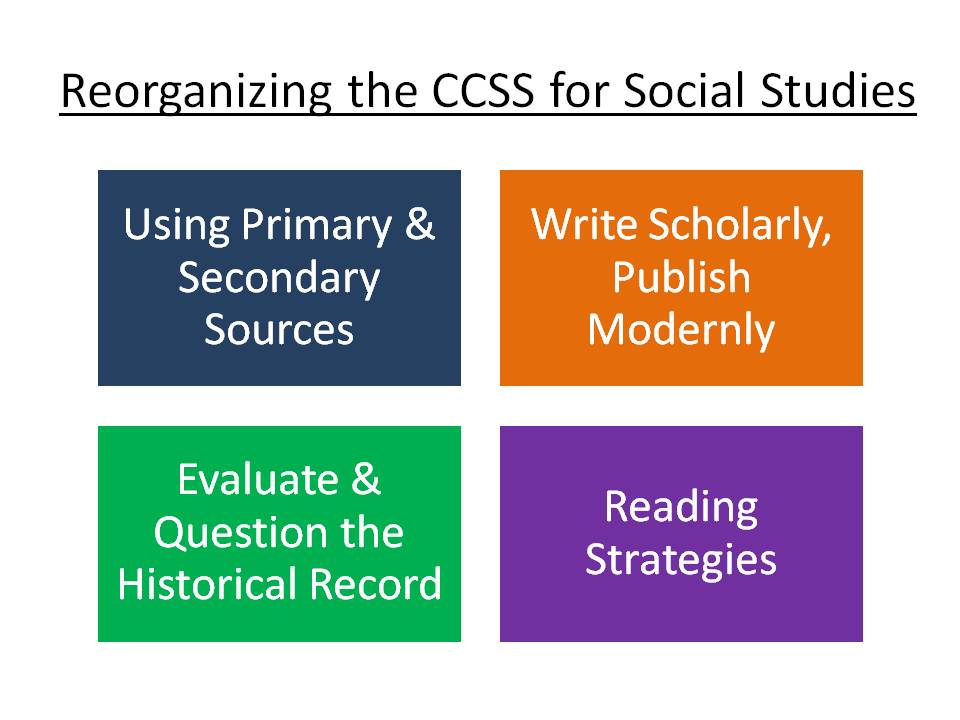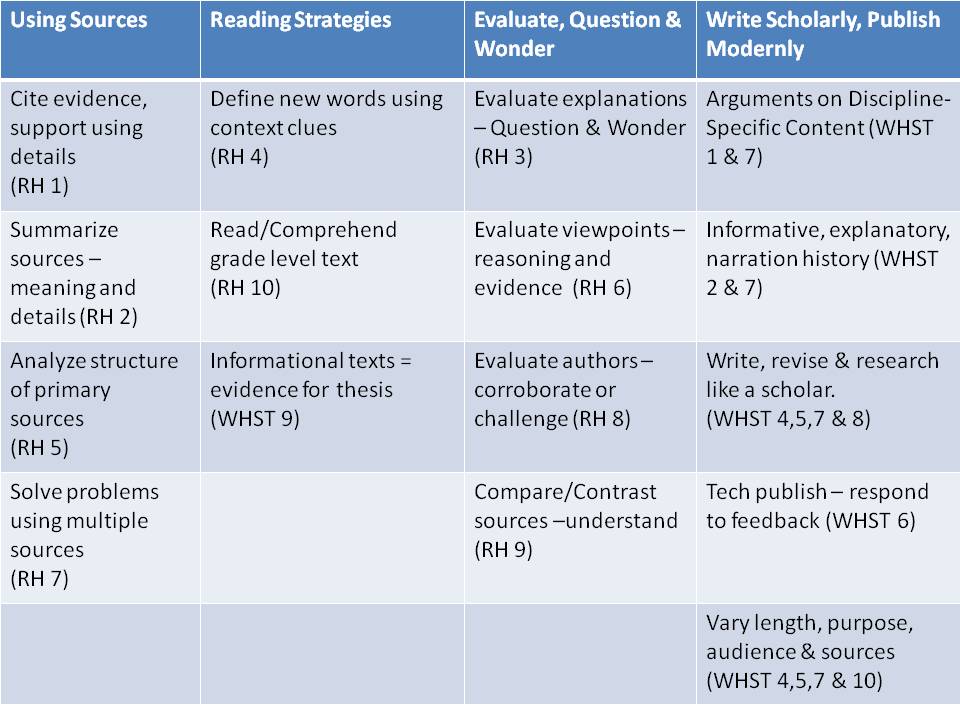Over the past year I’ve had the great privilege of presenting my ideas regarding the implementation of the new Common Core State Standards in Secondary Social Studies classrooms for the Bureau of Education and Research (Click here if you'd like to read the workshop description on the BER website). I took on the challenge of sharing this work with others because, frankly, I new it would incentivize me as a classroom teacher to dive in head over heels myself. I didn’t want somebody else telling me what the Common Core meant to me as a Middle School History teacher, I wanted to get elbow-deep in that stuff, get dirty and figure out what exactly it meant for my students, my classroom and my teaching.
Responses to the Common Core have ranged from ulcer-inducing panic attacks to the ever flippant “This too shall pass” response many of use are familiar with. It seems to me that the majority of panic has been centralized in the English Language Arts and Mathematics crowds – and for as much as I love my colleagues in these areas they’re starting to sound a little like Chicken Little running about screaming “The sky is falling! The sky is falling!”
While I’m poking fun here, and I do believe rumors of Common Core Catastrophe have been greatly exaggerated, I am sympathetic to their plight. While I understand as a Social Studies teacher the CCSS aren’t going to radically alter my classroom to the same extent to which they might if I were teaching Math or ELA, to assume they mean nothing is more than a mistake…it’s a missed opportunity.
The first thing I noticed when looking at the standards for Reading in History and Writing in History is that they were largely repetitive and very, very wordy. One of my favorite strategies to use with students is to take key term and summarize its definition in what I call “5 Word Max” definitions. This requires students to put the definitions in their own words and make decisions about what words they will use to convey the meaning, which greatly helps with retention. Knowing that I would have a difficult time integrating each of the standards as written into my already existent Social Studies curriculum, I sat out to condense each of the ten reading standards and nine writing standards into “5 Word Max” definitions.
While I’m sure many will argue with my summarizations, the particular words are really not overly important. The important thing is to look at the standards themselves and decide for yourself what it means for your students. Click HERE to take a look at the 11th and 12th Grade original standards for Reading in History/Social Studies, and compare them to my summaries below.
Next, if you care to, take a look at the standards for 11th-12th Grade Writing in History/Social Studies and compare them to my list below. Again, I’m sure there’s PLENTY of room to nitpick the individual summaries but my goal wasn’t to make them bulletproof, just useable.
After shortening down these standards into something I felt was a bit easier to look at, I noticed a few things. Although the folks behind the Common Core curtain saw fit to organize the reading standards into four sections (Key Ideas and Details, Craft and Structure, Integration of Knowledge and Ideas and Range of Reading and Level of Text Complexity) I was seeing different patterns emerge. Namely that there was an immediate demand for Social Studies teachers to begin using Primary and Secondary Sources, as well as to require students to evaluate and question historical sources. Upon looking at the writing standards, it really felt like a very common sense approach to writing, a real “No Duh!” kind of moment if you can excuse my 90’s vernacular. Most of these standards could be summarized as “Write Scholarly, Publish Modernly.” Think about it – when you think of scholarly writing, what do you think about? Multiple, creditable sources? Knowing your audience and purpose? Coherent arguments or explanations? The same things your college professors required are what we should be requiring of students writing in our class! With the exception of one, which to me stuck out like a sore thumb as something that was going to need to be taught more like a reading strategy and not a writing strategy, most of the writing standards could be summarized as “Write Scholarly” with an emphasis on modern publishing methods.
All that said, I believe that the Common Core State Standards for Social Studies and History teachers can be better summarized into four themes.
Each of these four themes illustrates a specific need for our students – not merely additional work for teachers. If we hope to prepare students to be the educated voters of tomorrow, lawyers to serve in our legal system or politicians with a hope of solving the problems in Washington, we’ll need students who are able to write scholarly about history, utilize primary and secondary sources, evaluate and question the historical record and read at a high level.
I’m sure some will brush this aside as unnecessary or claim it “doesn’t apply to them” which is unfortunate given the opportunity they represent to reboot our Social Studies instruction and provide greater relevance for our students. Likewise, I’m sure others will accuse me of oversimplifying the Core Standards, and that’s ok by me. I’m confident that being mindful of these four themes and incorporating them with our current Social Studies instruction will not only ensure our students are prepared to meet whatever the Common Core Test can present, but they’ll be better citizens for it as well.
For useful strategies for implementing the Four Themes of the Common Core State Standards in History, sign up for an upcoming BER seminar with Mark Clements or shoot me an email about bringing this workshop to your school district.





